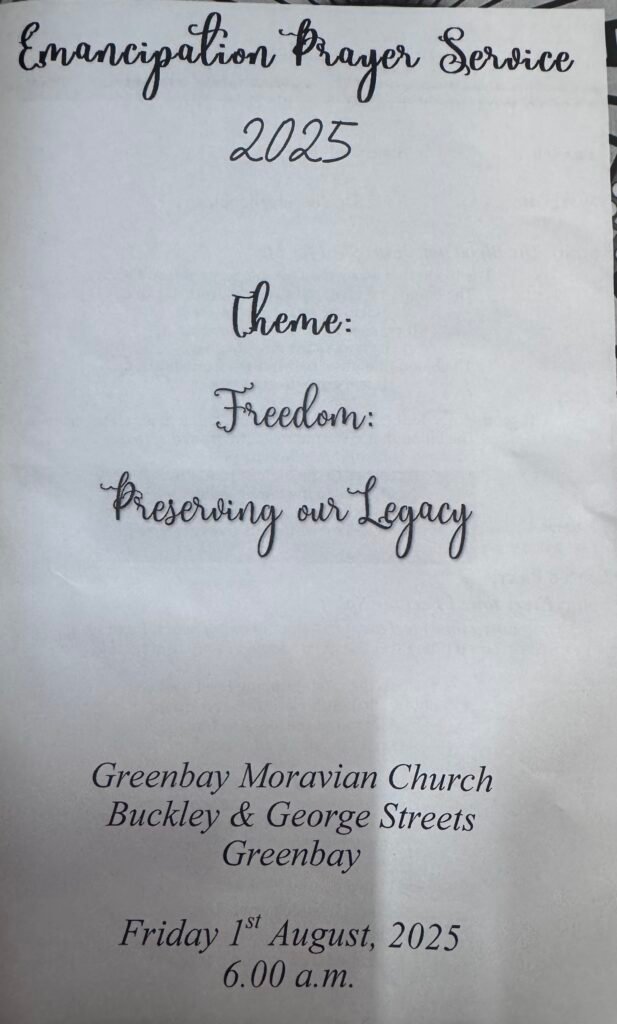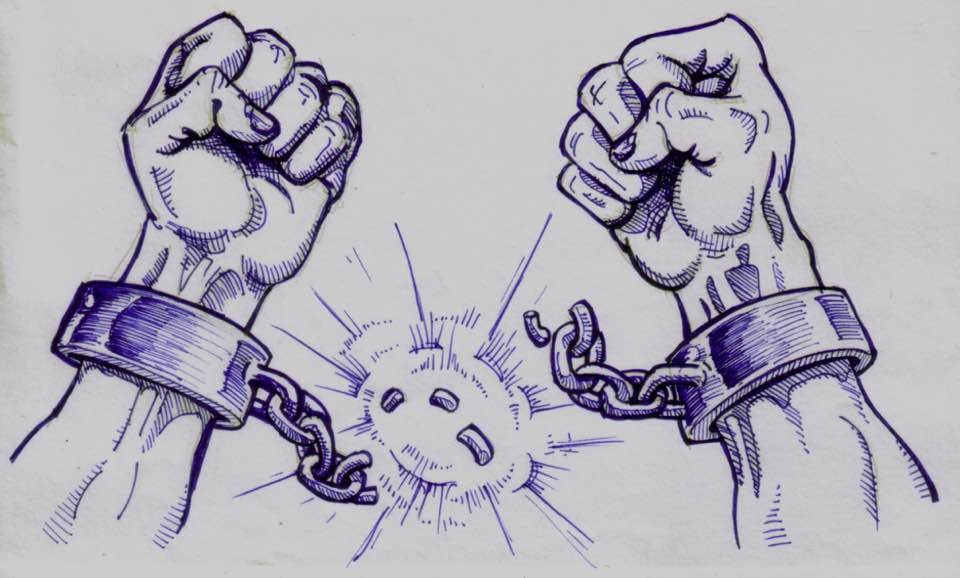Presentation by Reverend Dr Joseph Nicholas taken from his thesis during the Emancipation Day Remembrance after the 6:00 am Emancipation Prayer Service at the Greenbay Moravian Church, Friday 1 August 2025.

By 1724, the slaves formed a large group, reaching a peak of almost 38,000, increased a little by the time of emancipation. Sugar, as a major export, reached its height in the 18th century, and society benefited greatly.
By the second half of the 18th century, there were less and less African-born slaves on the island.
Samuel Manning, the most successful planter on the island in this period, did not buy any new slaves. Another successful planter, John Ockman, reported that he had less than one slave on his estate. This showed that the slave trade itself was losing speed.
When the slave trade was abolished in 1807, planters had to deal with the reality that the less slaves they had also meant that they had to manage what they had better, or they would have to pay more for the labour of the man.
In the early years, when the clergy of the established church came to settle, they came largely to visit the immigrants who had migrated to these parts. The Methodists and Moravian people came afterwards, came as missionaries, and as such, they were more open to direct contact with the slaves.
Especially in the early period, the white missionaries often met hostility from the white planters. It was felt that these missionaries were too close to the slaves. However, several of them became active supporters of the work of the missionaries and members of the church.
Among the positive factors in favour of the missionaries was that the missionaries and the slaves often lived on the same plantation and often had much more direct interaction. There were slaves who served the church as elders and the like.
Before the arrival of the missionaries, the slaves were regarded as, quote unquote, heathens. However, on further reflection, it became clear that the perception was as a result of, unquote, the “harsh pressures of their subjection in the slave society, which had robbed them of their self-respect”. It is therefore no wonder that they were more at home with the presence of the missionaries. One could suggest that the slaves had, first of all, to be set free from the perception that they did not have any love for God or others.
Sugar’s way as king was under pressure as competition for Maritius and Brazil loomed large.
Between 1815 and 1833, Antigua’s sugar exports dropped by 25 percent. Sugar was losing its power. The planters understood that with very little land available the formerly enslaved people would have to go back to the plantation for work.
There were frequent droughts, and as such, no production. The cost of maintaining slaves was going up.
Apprenticeship meant that the enslaved people would still be with the planters for another four years or so. But in Antigua, the planters were free to choose which plan (given the enslaved people’s heavy dependence on the plantation for survival). So, although we sometimes celebrate the fact of no apprenticeship system, it was not necessarily a good thing for these formerly enslaved people (here).
They had to find their own way soon.
At the meeting of the assembly in September 1833, one planter made it very clear that owning slaves was bad for business. Mr. Sandra Otter Bajer said, oh, I have been making calculations with regard to the probable results of emancipation. And I have ascertained beyond a doubt that I can cultivate in my estate at least one-third cheaper by free labour than by slave labour.
The only issue was that they did not want this part of the story to be made public to the British Parliament, (so they could) receive compensation from the British Parliament for their formerly enslaved. So they were trying to con the Parliament in a bid to get twice the benefits.; compensation and not having to provide for the population.
Religious leaders all spoke warmly of the willingness of the slaves to take on full freedom without the period of apprenticeship.
In the wake of the declaration of emancipation, the authorities sought to reinforce some parts of the social fabric. They revised some provisions to cater for the aged and the poor.
When the Emancipation Proclamation came, planters and former slaves came together to worship. While there was a heightened threat and fear of violence in other islands, Antigua was generally much different (on) that day and generally.

